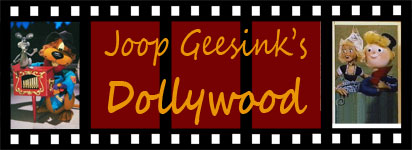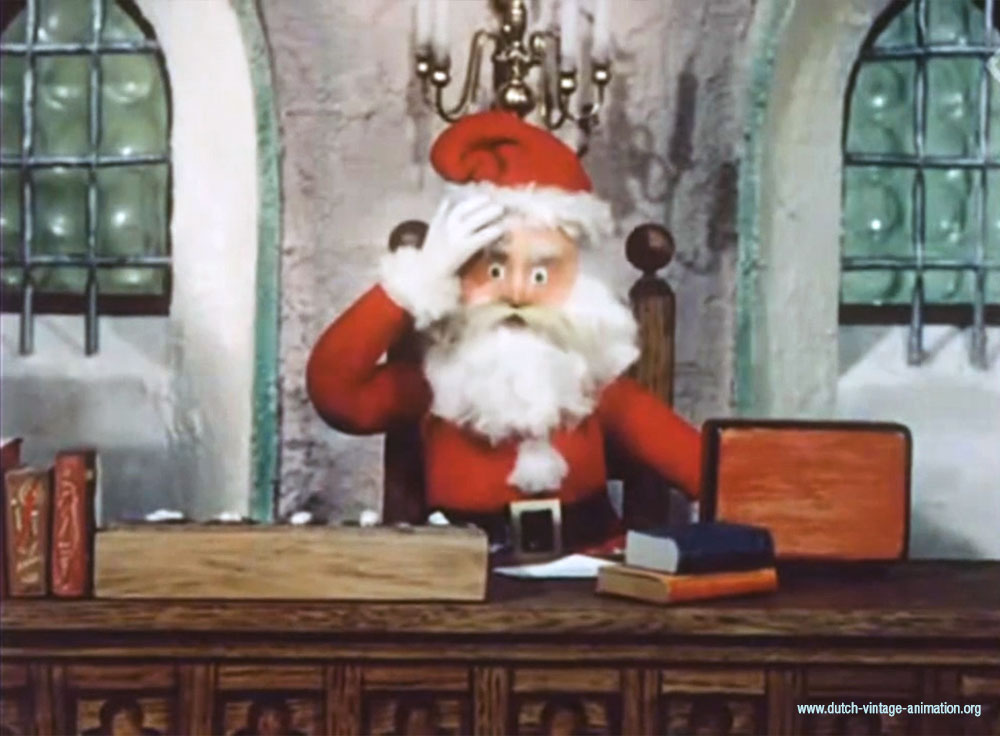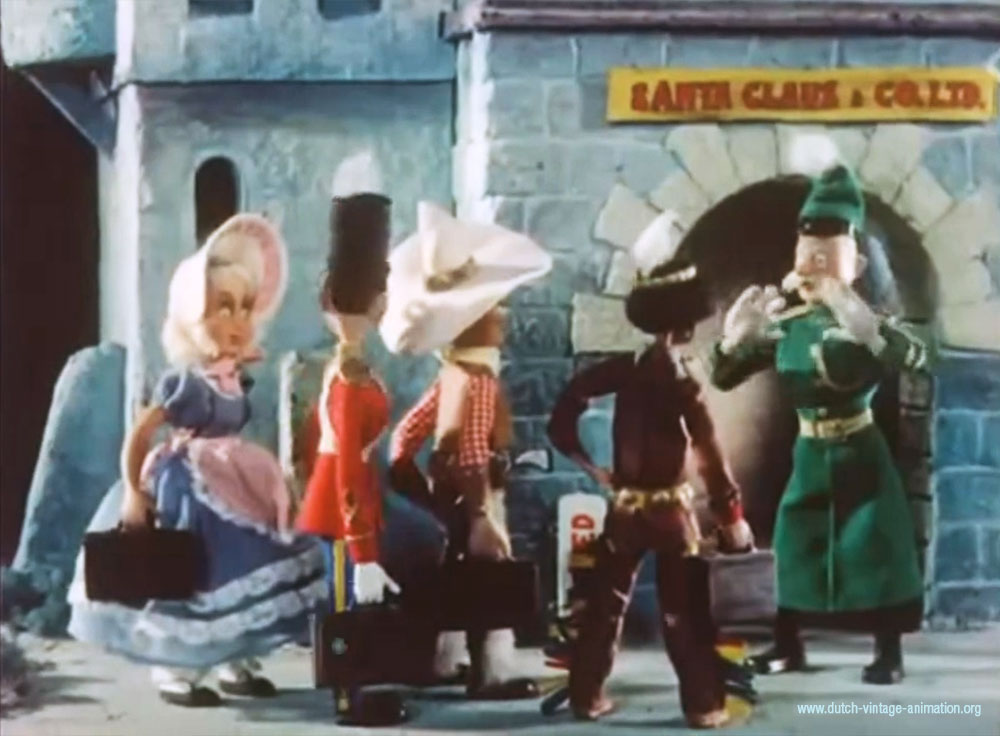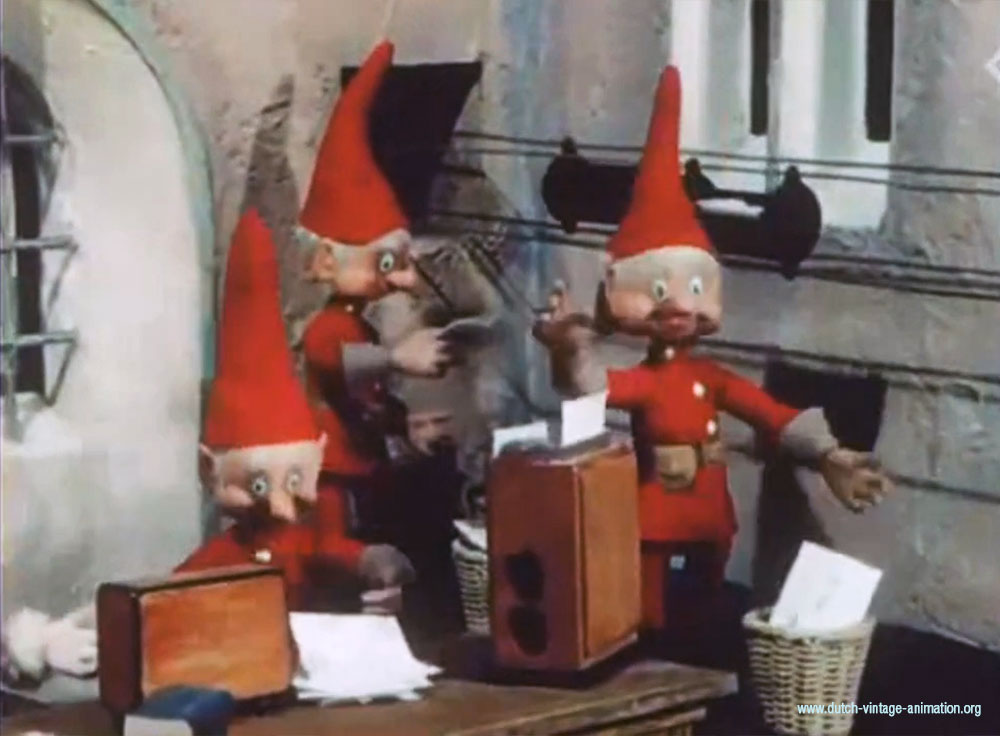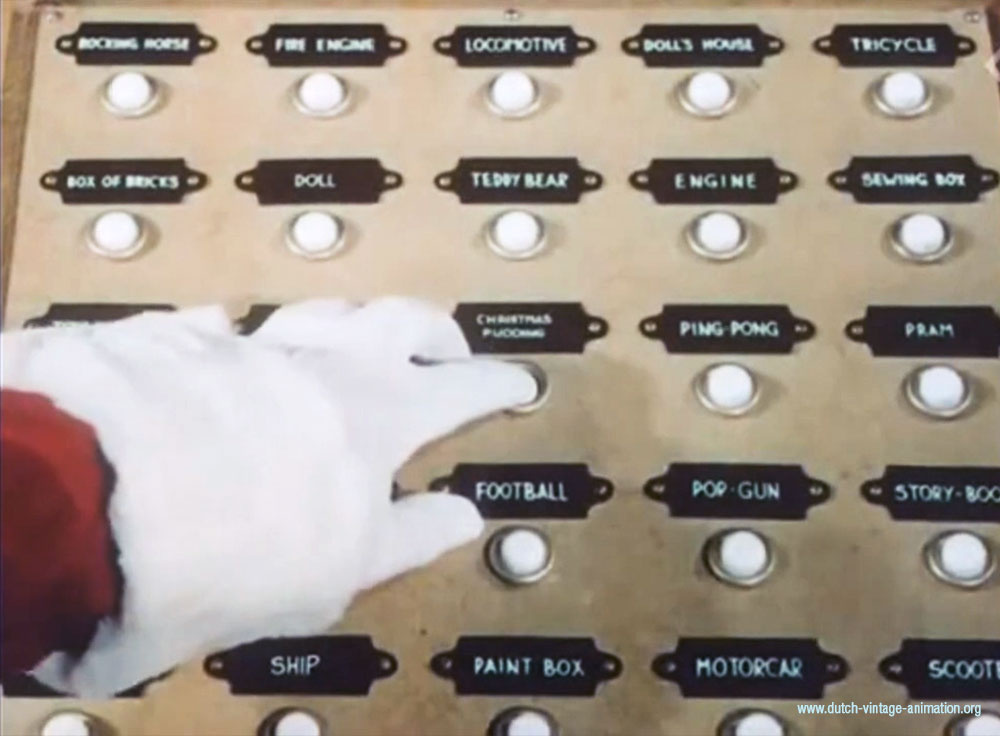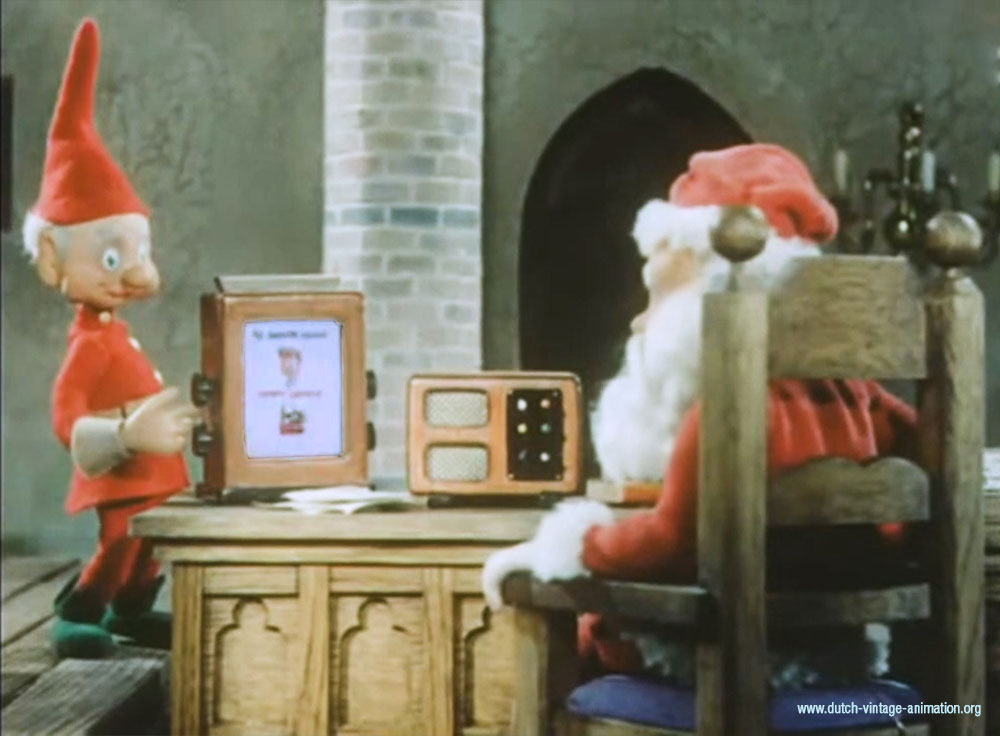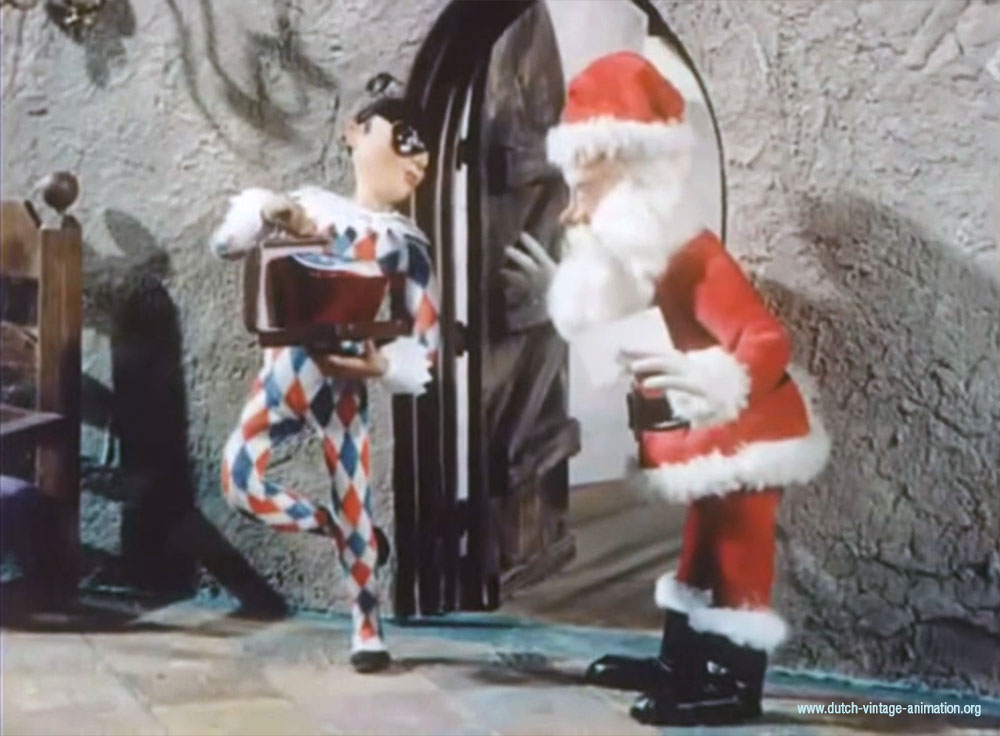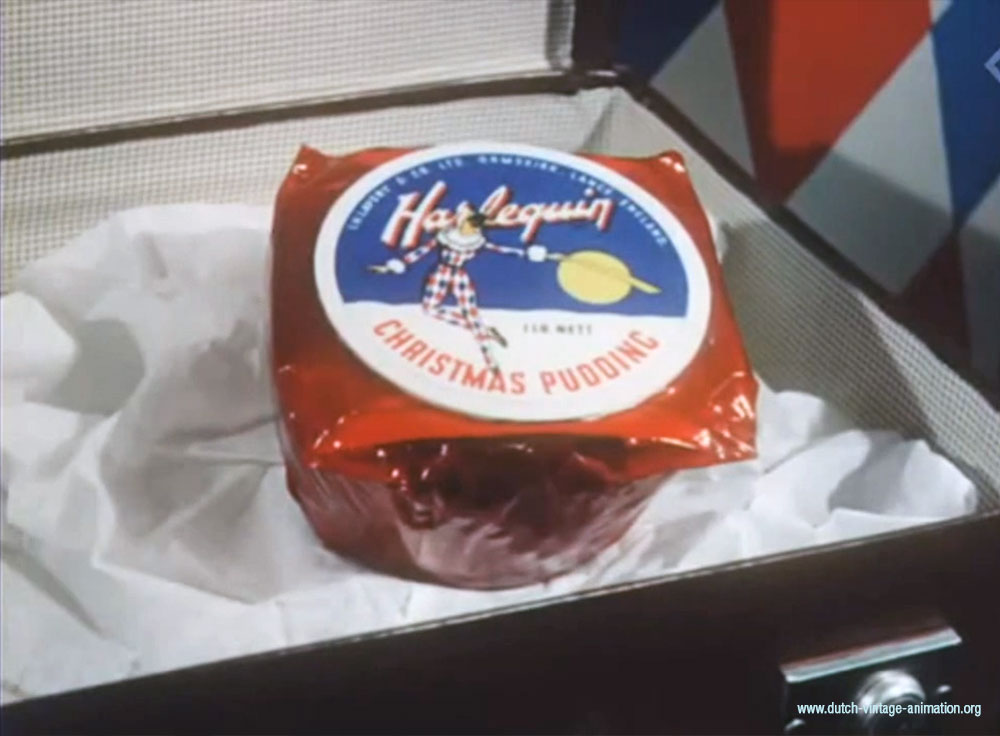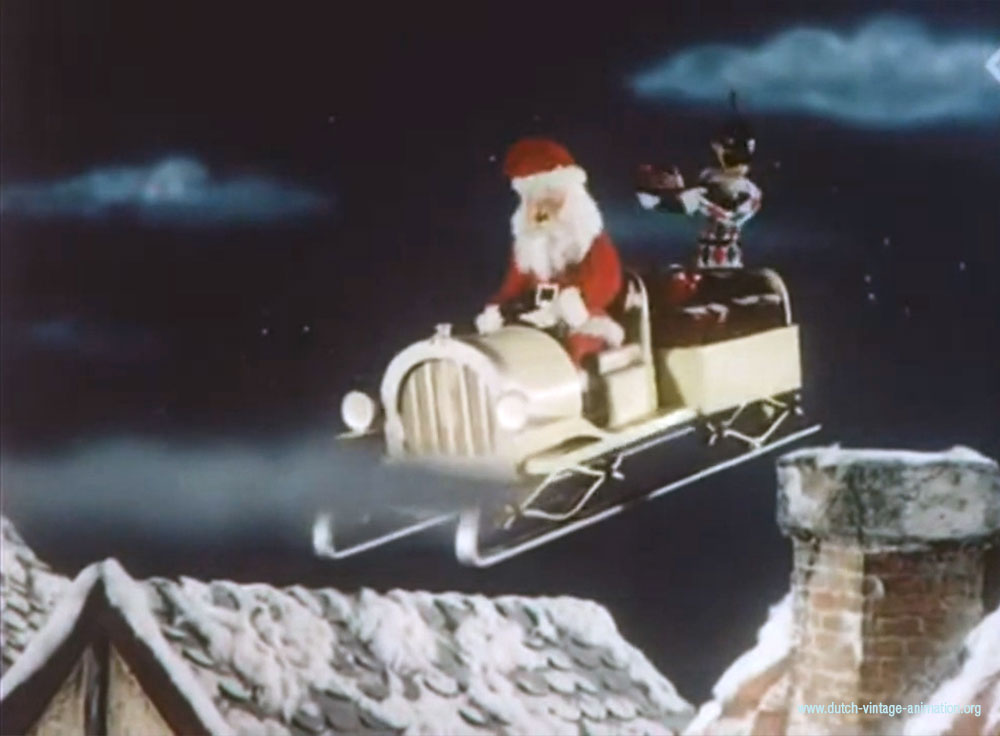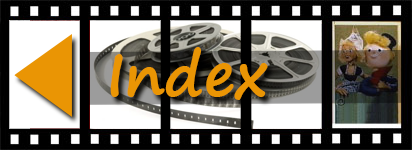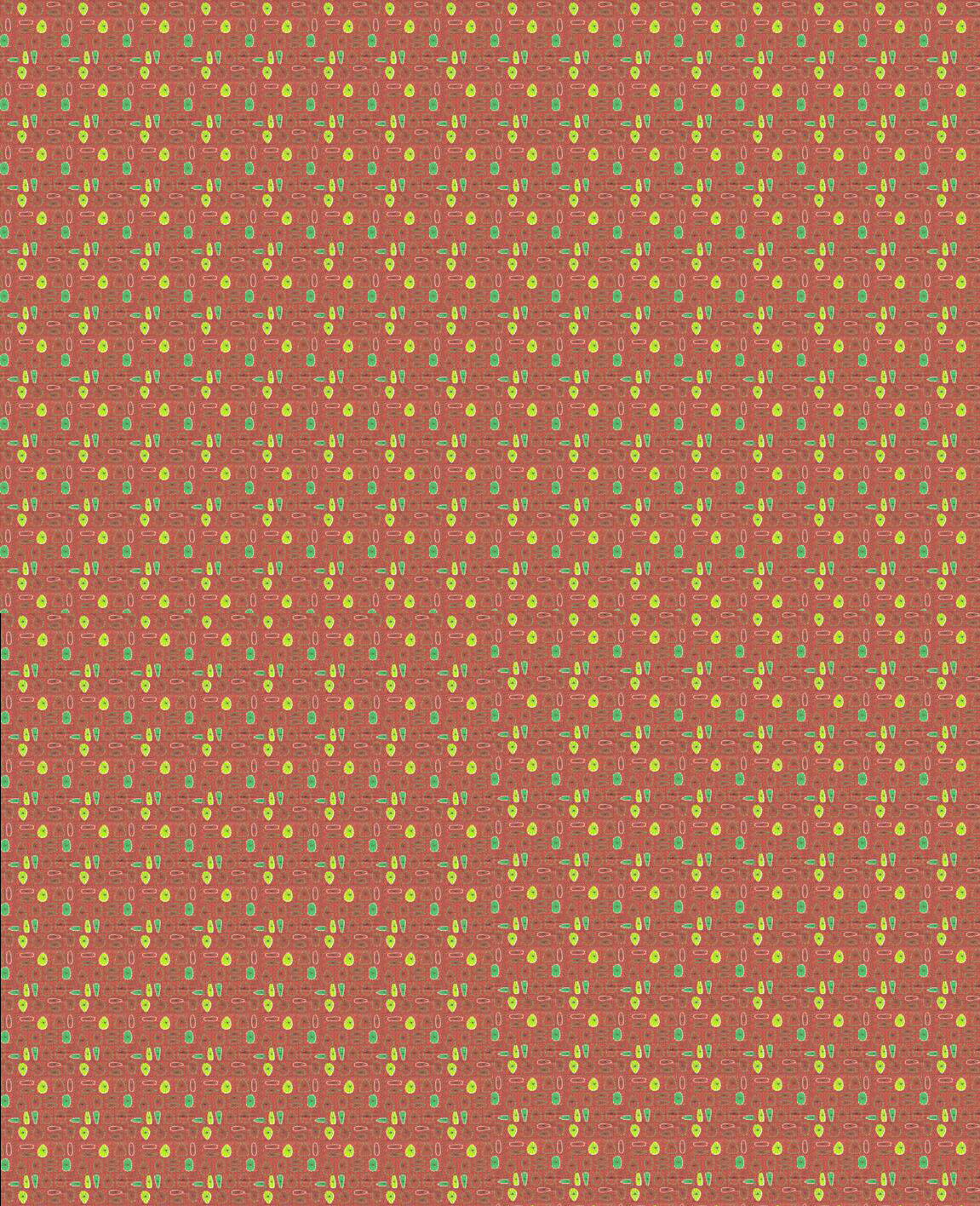
Christmas
Santa Claus is working on collecting the gifts that are on sent wish lists. Suddenly there is a demand for Christmas pudding. This is not available. A harlequin who sneaked in offers to help.
Harlequin
This film is charmingly made. It is a pity that it is hardly known which collaborators were involved in this production.
The main character, the harlequin, is clearly a 3D reproduction of the logo that is depicted on the packaging. It may be clear that an advertising designer for packaging did not take into account the use of this logo as a puppet character.
In order to achieve the best possible visual likeness, the body of the doll was cut entirely from wood. A foam copy was made of this model. This copy had a frame with aluminium threads in the arms and legs. The figure was then hand-painted with the lozenge pattern.
At the moment when the harlequin hands over the Christmas pudding to Santa Claus, he assumes a pose that matches the pose on the packaging. Presumably, this was a requirement of the customer.
Tablet avant la lettre
The elves show Santa the wish list on a screen. This can be seen as a high-tech solution, similar to a tablet. In 1952, the technology of tablets was not available and people did not know that it would ever come. The use of this 'analogue tablet' was primarily a practical solution for making it clear at a glance what each person's wishes were. It communicates very directly.
Button panel
Santa presses a button on a keypad, in the middle of which there is a button that says 'christmas pudding'. The button does not produce a reaction, so it is pressed repeatedly.
An attentive viewer will see that this shot was filmed with a real hand. Santa is wearing a white glove, with three fingers and a thumb. The actor's ring finger and middle finger are joined together in one glove finger. Why this solution was chosen can only be guessed at. It is likely that the original puppet did not have sufficient animation capabilities for this sophisticated motor skill.
In order to realise this shot, the panel with the buttons was made full-size again.
Sleigh
Santa Claus and Harlequin bring the pudding together. Everyone knows that Santa is pulled through the air in a sleigh by reindeer. This flying snowmobile was funny but certainly a cost-effective alternative to the reindeer.
The shot was presumably made by means of a double shot:
Take 1:
The sleigh with dolls was on a black turntable in an otherwise all-black setting. The disc rotates clockwise.
Take 2:
The roof with chimney was filmed, with the clouds in the background. The set was otherwise empty.
In the old film technique, a black background was used in the way that a green or blue background is used now. The difference is that the result is only visible after all the mechanical processing has been carried out and the images have been merged in the laboratory. This merging required excellent technical knowledge on the part of the cameraman. It was therefore a time-consuming job.
Production and delivery time
When filming on Technicolor, it could take several weeks before the result was visible on film. The Dollywood studio was in the Netherlands (Amsterdam) and the film laboratory was in London (England) and the films went there and back by boat.
Dollywood had very skilled camera operators, who even managed to make these double shots directly in the camera. This saved the studio from the very high duplication costs of the film laboratory.
Credits
| Title: | Harlequin and Christmastime | |
|---|---|---|
| Client: | Harlequin | |
| Year of production: | 1952 | |
| Duration: | 2 minuten | |
| Music | Unknown. Presumably Hugo de Groot | |
| Art Director: | Unknown. Presumably Jan Coolen | |
| Animator: | Unknown. Presumably József Misik | |
| Puppets: | Harry Tolsma | |
| Format: | 35 mm, Technicolor |
